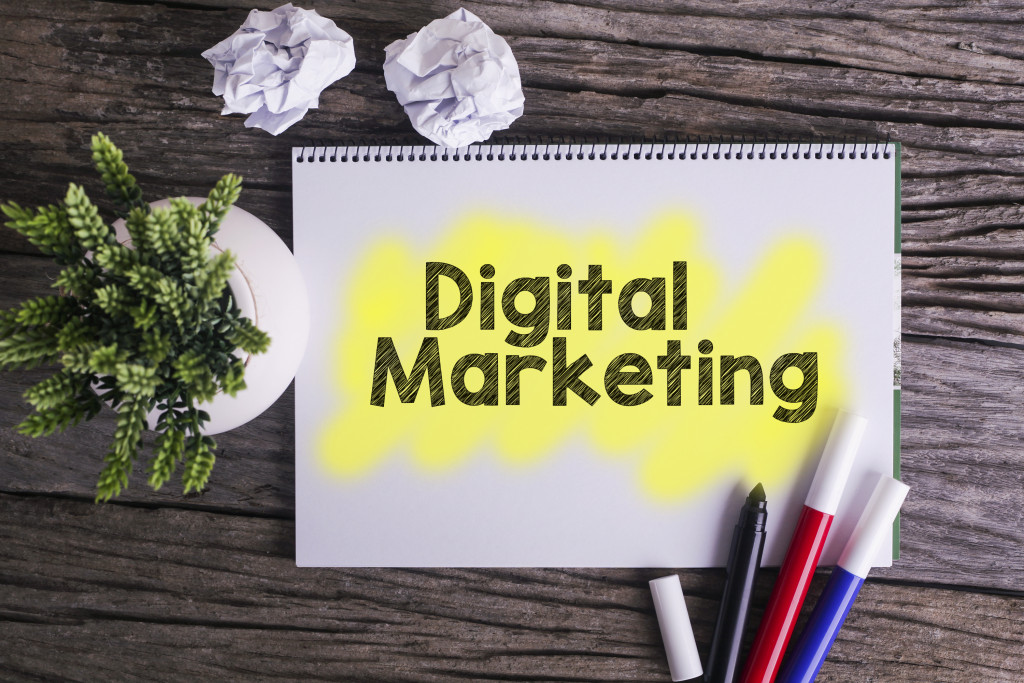Print, television, and radio have ruled the advertising world for the past decades. Corporations spent billions to ensure visibility, and the big three were the way to go. However, the advent of the internet and social media created another medium of advertising. Digital has been competing with traditional ads for corporate money over the past years, and now it has gained the upper hand.
The Big Shift
Spending on digital ads totaled more than $150 billion in 2020. In contrast, spending on traditional media (print, radio, and television) only garnered $107 billion. The surge of digital spending was powered by both corporations and small businesses. The decline of traditional ads reflected the changing consumer practices and habits.
Print, radio, and television had significantly diminished audiences compared to their heydays 20 years ago. The younger generation will much rather browse their phones than watch TV or read a newspaper. Streaming services like Netflix, Disney Plus, and HBO Max have made live television spectacles irrelevant. Television’s biggest event, the Superbowl, garnered the lowest ratings in 15 years.
The Oscars and the Emmys also had significant rating drops. The drop in viewership was particularly glaring since the lockdowns of 2020 kept everyone at home. People had more options due to streaming services and the internet, making expensive TV ads less profitable.
Why Digital Sells
Americans spent around three hours in front of their phones, laptops, or PCs before 2020. Screen time more than doubled during the lockdowns as people were forced to remain at home. Increased screen time made digital ads more valuable. Social media platforms capitalized by promoting digital ads to large corporations and small businesses.
On Facebook, small businesses outspent large corporations by sheer numbers. Localized ads became more prevalent, and complex algorithms were used to target particular demographics. Specific algorithms and site trackers can predict the viewing habits of set demographics, allowing companies to tailor and target their ads to their desired viewership. Digital ads also enable instant buys through online transactions.
Online shopping is no more than just a growing trend. 80 percent of Americans have made online purchases, and online shopping is becoming the preferred method of purchasing goods. Digital sales in the US grew by 40 percent, amounting to more than $860 billion in 2020. Experts predict an explosion in online transactions in the following years as people get more accustomed to online shopping.

Traditional Still Has Its Strengths
Big business might be shifting their spending towards digital ads, but a few still hold most of their ads on traditional media. Digital ads are more likely to work on impulse buyers, particularly for purchases below $1,000. Companies with more expensive or luxurious products are better served using more traditional methods.
Older generations are also more likely to watch television, listen to the radio, or buy newspapers. While digital ads are great for pushing everyday products and services, traditional media is still the preferred home for automotive ads, property market listings, and luxury brands. Traditional ads feel more real and garner more purchasing intent than digital ones. A billboard that you pass by every day or a flyer in your hand has more influence than a phone ad that you can ignore or skip.
Ads that use endorsements also work better on TV, radio, or newspaper. Most endorsements require a bit of exposition, which would get instantly skipped in digital ads. People are also more likely to talk about traditional ads. An ad on a TV is more likely to be perceived as seen by most people (compared to a digital ad) and more likely to promote discussion in the workplace or among peers.
Getting the Best of Both Worlds
Most big ad campaigns include both traditional and digital ads. Digital campaigns are used to amass awareness and sometimes small purchases. Traditional media targets more serious buyers, particularly for more expensive purchases. Small businesses will often use digital ads because of affordability and then transition to traditional ads once they get bigger.
Most brands will also post their TV ads on social media platforms, get quick responses through likes, dislikes, and comments. Relying purely on digital or traditional ads can be limiting, but using both ensures maximum exposure.
Digital is not the future of advertising — it is just part of it. While digital ad spending has overtaken traditional media, it won’t replace it entirely. Traditional advertising is still effective in particular instances, and digital ads won’t be as effective in solely pushing big purchases. Both can be used to make the most out of advertising. There’s much to see in the significant changes that will happen in this area.




